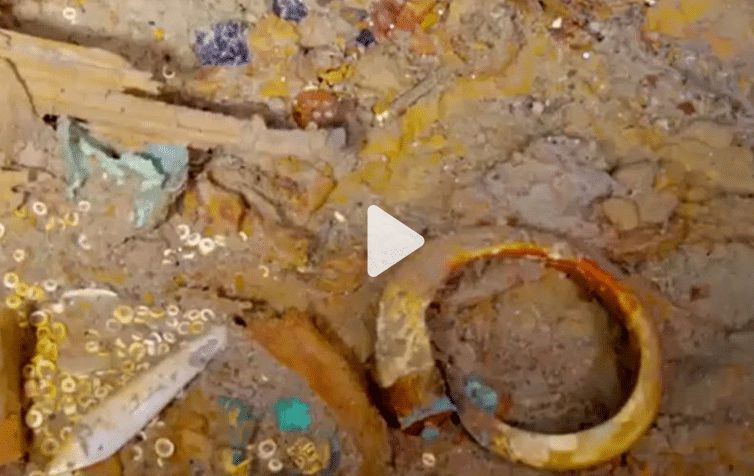One of the most terrifying sharks to have ever existed, Megalodon, wasn’t the cold-blooded murderer many think it was—at least not literally.
According to a study published last week in the journal Proceedings of the National Academy of Sciences, scientists have discovered the extinct shark was partially warm-blooded, with a body temperature around 7 degrees Celsius (44 degrees Fahrenheit) warmer than anticipated seawater temperatures at the time.
According to study coauthor Robert Eagle, professor of marine science and geobiology at UCLA, “we found that O. megalodon had body temperatures significantly elevated compared to other sharks, consistent with it having a degree of internal heat production as modern warm-blooded (endothermic) animals do.”
The findings suggest this distinct trait played a key role in the ancient predator’sterrifying size — and its eventual disappearance.
Believed to be at least 15 meters (49 feet) long, Otodus megalodon, also known as the megatooth shark, was one of the largest apex marine predators since the Mesozoic era and went extinct about 3.6 million years ago, according toEagle.
Scientists previously theorized that megalodons were warm-blooded, but the new study is the first to provide concrete evidence to that effect.
The researchers observed how closely carbon-13 and oxygen-18 isotopes found in the ancient shark’s fossilized teeth were bonded together — a data point that can reveal how warm the body was. From this finding, they deduced the megalodon’s average body temperature was about 27 C (80 F).
Like modern great white and mako sharks, megalodons were regionally endothermic, which means they had the ability to regulate temperature in certain parts of the body, according to the study. In contrast, the body temperatures of other cold-blooded apex predators are regulated by the temperature of water around them.
Being warm-blooded may have been one of the key drivers fueling megalodons’ massive size and overall prowess as predators, according to senior study author Kenshu Shimada, a paleobiologist at DePaul University in Chicago.
“A large body promotes efficiency in prey capture with wider spatial coverage, but it requires a lot of energy to maintain,” Shimada said in an email. “We know that Megalodon had gigantic cutting teeth used for feeding on marine mammals, such as cetaceans and pinnipeds, based on the fossil record. The new study is consistent with the idea that the evolution of warm-bloodedness was a gateway for the gigantism in Megalodon to keep up with the high metabolic demand.”
For such an enormous animal, having to use so much energy constantly to regulate its body temperature may have contributed to its downfall as the world changed. The timing of megalodons’ extinction coincides with the cooling of the Earth’s temperature, the researchers said.
“The fact that Megalodon disappeared suggests the likely vulnerability of being warm-blooded because warm-bloodedness requires constant food intake to sustain high metabolism,” Shimada said. “Possibly, there was a shift in the marine ecosystem due to the climatic cooling,” causing the sea level to drop, altering the habitats of the populations of the types of food megalodon fed on such as marine mammals and leading to its extinction.
Compared with other apex predators, megalodon was much larger, and therefore more vulnerable to changes in populations of prey, said lead study author Michael Griffiths, professor of environmental science, geochemist and paleoclimatologist at William Paterson University in New Jersey.
But learning more about the ancient shark could still help scientists better understand the threats similar marine animals face today.
“One of the big implications for this work is that it highlights the vulnerability of large apex predators, such the modern great white shark, to climate change given similarities in their biology with megalodon,” Griffiths said.

